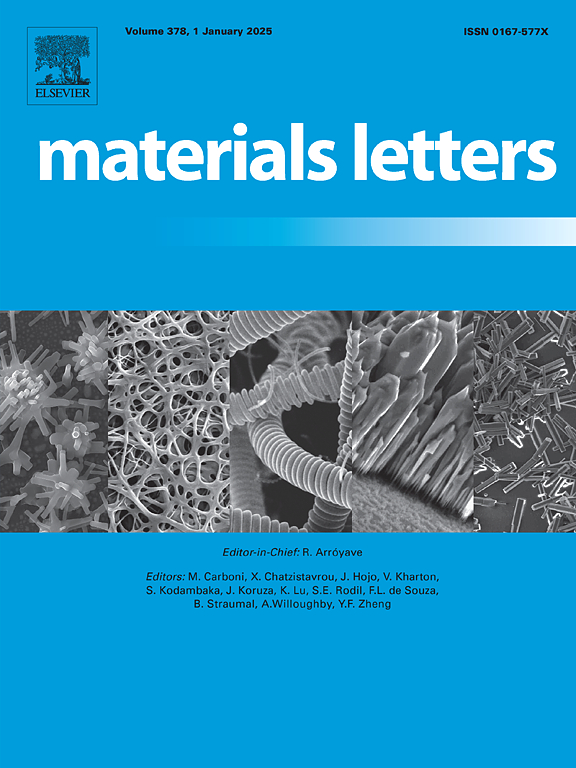Hydrogen-bonded organic framework nanoflowers for near-room-temperature sensing
IF 2.7
4区 材料科学
Q3 MATERIALS SCIENCE, MULTIDISCIPLINARY
引用次数: 0
Abstract
Developing hydrogen-bonded organic frameworks (HOFs) with unique architectures and functions is of great significance but remains major challenges. Here, we have successfully created porphyrin-based HOF nanoflowers (HOF-199-f) using a well-designed liquid-phase ultrasonic method. These nanoflowers exhibit exceptional resistance-based near-room-temperature sensing properties, with a linear response (27.0–55.0℃), high resolution (0.54 % K−1), high sensitivity (ΔR/RT = 120.0 % at 34.5℃), fast response and recovery (97 s/41 s). This greatly outperform HOF-199, highlighting the importance of the nanoflower architecture of HOF-199-f. This work provides insights for designing advanced sensors using functional HOFs.
求助全文
约1分钟内获得全文
求助全文
来源期刊

Materials Letters
工程技术-材料科学:综合
CiteScore
5.60
自引率
3.30%
发文量
1948
审稿时长
50 days
期刊介绍:
Materials Letters has an open access mirror journal Materials Letters: X, sharing the same aims and scope, editorial team, submission system and rigorous peer review.
Materials Letters is dedicated to publishing novel, cutting edge reports of broad interest to the materials community. The journal provides a forum for materials scientists and engineers, physicists, and chemists to rapidly communicate on the most important topics in the field of materials.
Contributions include, but are not limited to, a variety of topics such as:
• Materials - Metals and alloys, amorphous solids, ceramics, composites, polymers, semiconductors
• Applications - Structural, opto-electronic, magnetic, medical, MEMS, sensors, smart
• Characterization - Analytical, microscopy, scanning probes, nanoscopic, optical, electrical, magnetic, acoustic, spectroscopic, diffraction
• Novel Materials - Micro and nanostructures (nanowires, nanotubes, nanoparticles), nanocomposites, thin films, superlattices, quantum dots.
• Processing - Crystal growth, thin film processing, sol-gel processing, mechanical processing, assembly, nanocrystalline processing.
• Properties - Mechanical, magnetic, optical, electrical, ferroelectric, thermal, interfacial, transport, thermodynamic
• Synthesis - Quenching, solid state, solidification, solution synthesis, vapor deposition, high pressure, explosive
 求助内容:
求助内容: 应助结果提醒方式:
应助结果提醒方式:


